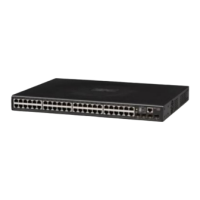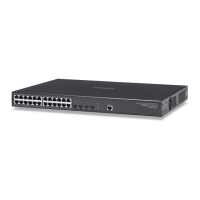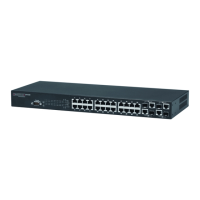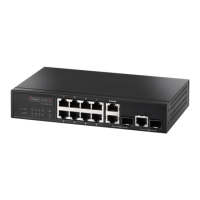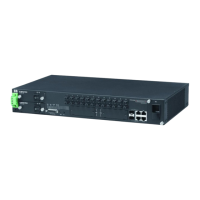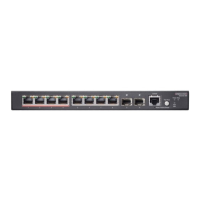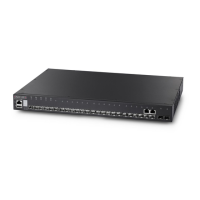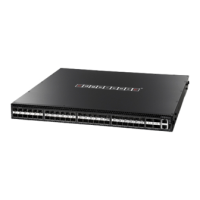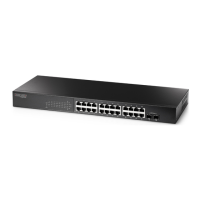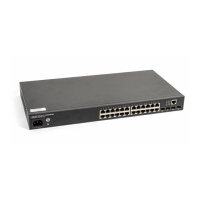Web Configuration
3-27
VLAN aware ports will strip the VLAN tag from received frames and insert the tag
in transmitted frames (except for the PVID). VLAN unaware ports will not strip the
tag from received frames or insert the tag in transmitted frames.
• Ingress Filtering Enabled – If enabled, incoming frames for VLANs which do not
include this ingress port in their member set will be discarded. (Default: Disabled)
• Packet Type – Sets the interface to accept all frame types, including tagged or
untagged frames, or only tagged frames. (Default: All)
If the Packet Type is set to “All,” the port can accept incoming tagged and
untagged packets. Any received packets that are untagged are assigned to the
default VLAN. Any tagged packets will be dropped unless the port is a member of
the VLAN identified by the VLAN tag in the packet.
If the Packet Type is set to “Tagged Only,” the port will drop untagged packets and
will only receive tagged packets. Tagged packets will be dropped unless the port
is a member of the VLAN identified by the VLAN tag in the packet. Switches should
be connected to each other with the Packet Type set to “Tagged Only.”
• PVID – The PVID (Port VLAN ID) is associated with untagged, ingress packets. It
is assigned to untagged frames received on the specified interface. The PVID has
no effect on ports that have Packet Type set to “Tagged Only.” (Default PVID: 1)
It is not possible to remove a port from VLAN 1 unless its PVID has been changed
to something other than 1.
Outgoing packets are tagged unless the packet’s VLAN ID is the same as the PVID.
When the PVID is set to “None,” all outgoing packets are tagged.
Note: If you select “Tagged Only” mode for a port, we recommend setting the PVID to
“None” as the standard configuration.
Web – Click VLANS, VLAN Port Configuration. Fill in the required settings for each
interface, and click Apply.
Figure 3-23 VLAN Settings
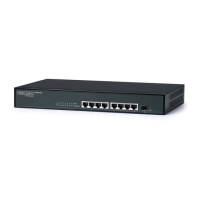
